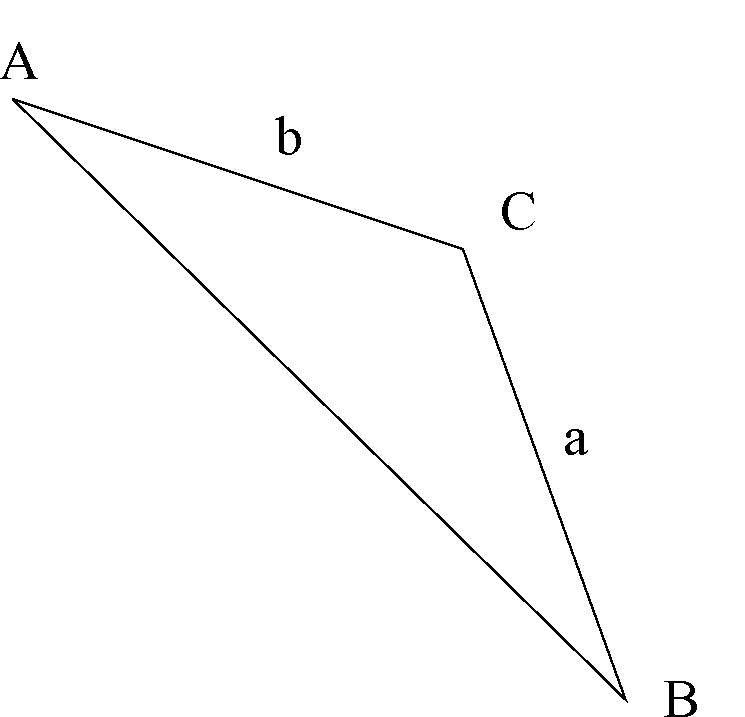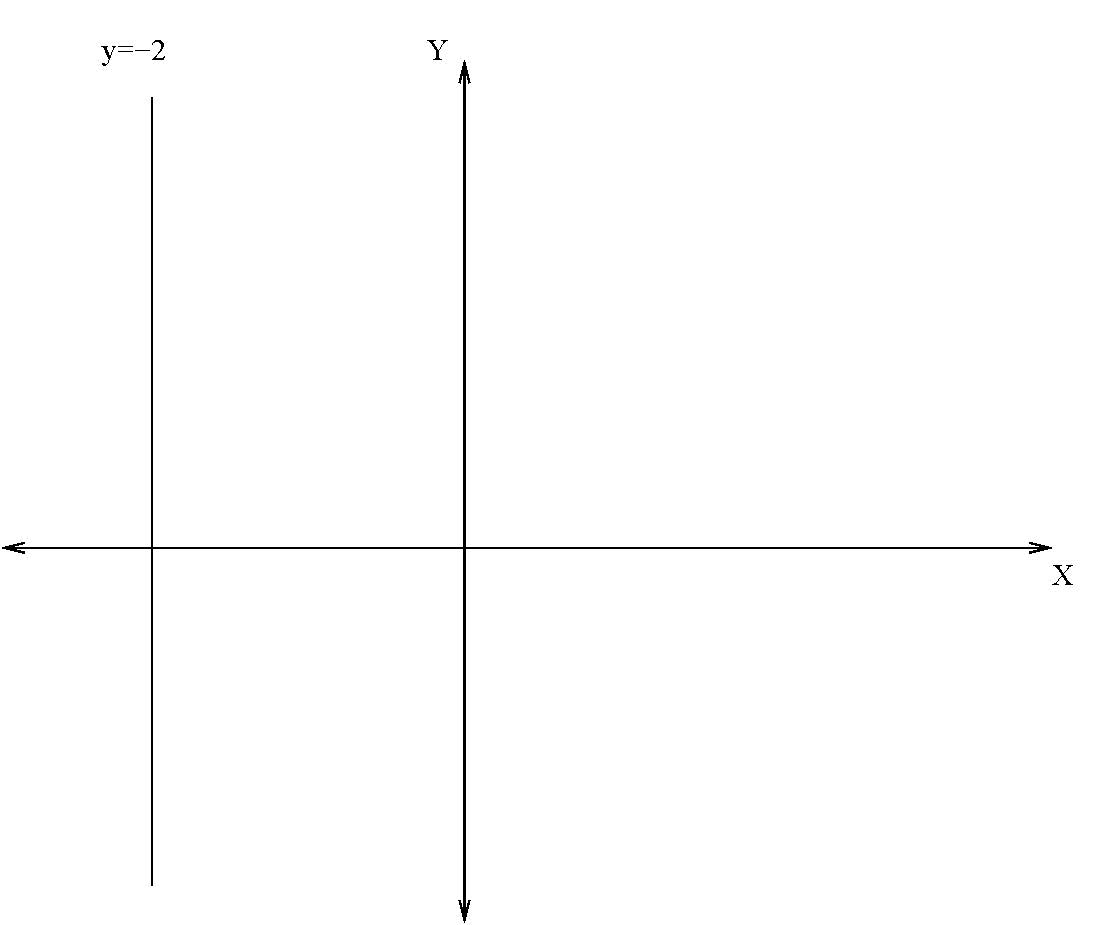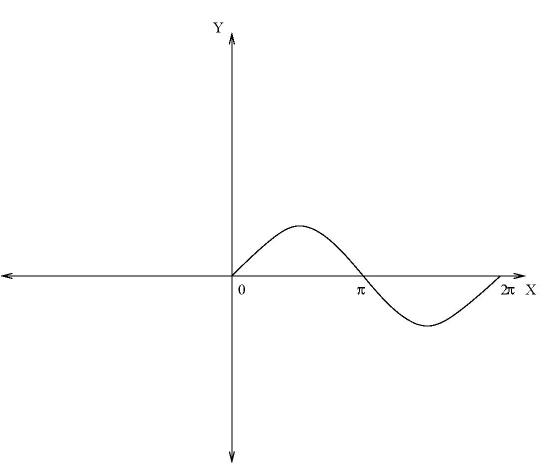Common Mistakes
( \newcommand{\kernel}{\mathrm{null}\,}\)
The purpose of this page is to alert the reader to the common mistakes which might be made in simple calculations. The reader should care fully analyze each statement, making sure that they can justify the correct statement.
Answer true or false for each of the statements given below. If the statement is false, write the correct version.
Exercise 1
1. √(a+b)=√a+√b
- Answer
-
False. Leave √a+b as is. It cannot be simplified any further.
Exercise 2
2. a−1/2=1a2
- Answer
-
False. a−1/2=1√a
Exercise 3
3. (a+b)2=a2+b2
- Answer
-
False. (a+b)2=a2+2ab+b2
Exercise 4
4. −(−2)2=4
- Answer
-
False. −(−2)2=−4
Exercise 5
5. −34=81
- Answer
-
False. −34=−(34)=−81
Exercise 6
6. 23=6
- Answer
-
False. 23=8
Exercise 7
7. a+bc=ac+bc
- Answer
-
True.
Exercise 8
8. ca+b=ca+cb
- Answer
-
False. ca+b cannot be simplified any further.
Exercise 9
9. 5hh(h+2)=4hh+2
- Answer
-
False. 5hh(h+2)=5h+2
Exercise 10
10.03 is not defined.
- Answer
-
False. 03=0
Exercise 11
11. 50=0
- Answer
-
False. 50 is undefined.
Exercise 12
12. xy2=x2y2
- Answer
-
False. xy2 cannot be simplified any further.
Exercise 13
13. −2x=0⇒x=2
- Answer
-
False. x=0
Exercise 14
14. −3x=2⇒x=2+3=5
- Answer
-
False. x=−23
Exercise 15
15. x2+1=0⇒x=±1
- Answer
-
False. x2+1=0 does not have any real solutions. It does have complex solutions x=±i.
Exercise 16
16. (x−2)2=0⇒x=±2
- Answer
-
False. x=2
Exercise 17
17. The solutions of the quadratic equation c2+5c+6=0 are given by c=±√(5c−6).
- Answer
-
False. Factor the quadratic (c−5)(c+1)=0. Then c=5,−1.
Exercise 18
18. (c−1)(c−3)=1⇒c−1=1, or c−3=1
- Answer
-
False. This is true if (c−1)(c−3)=0 (not 1).
Exercise 19
19. 2(43)=86
- Answer
-
False. 2⋅43=83
Exercise 20
20. 123=32
- Answer
-
False. 123=16
Exercise 21
21. The only solution of the quadratic equation x2−2x=0 is x=2.
- Answer
-
False. x=0 is also a solution.
Exercise 22
22. x−1x+5=0⇒x−1=0, or x+5=0
- Answer
-
False. Only x−1=0 (if x+5=0, this would cause division by zero).
Exercise 23
23. 3x2=32x
- Answer
-
True.
Exercise 24
24. By factoring an expression such as x2−4, we mean: Solve x2−4=0 which yields x2=4⇒x=±2
- Answer
-
False. By factoring an expression such as x2−4, we mean: x2−4=(x−2)(x+2).
Exercise 25
25. The conjugate of √(x+1)+2 is √(x−1)−2.
- Answer
-
False. The conjugate is √x+1−2.
Exercise 26
26. (√(x+1))2=(x+1)2
- Answer
-
False. (√x+1)2=x+1
Exercise 27
27. x−1 is the same as 1−x
- Answer
-
False. x−1 is the same as −(1−x).
Exercise 28
28. (x−1)(x−3)(3−x)=x−1
- Answer
-
False. (x−1)(x−3)3−x=−(x−1),x≠3
Exercise 29
29. −x−1=−(x−1)
- Answer
-
False. −x−1=−(x+1)
Exercise 30
30. 4x+4x+8=4+49=89
- Answer
-
False. 4x+4x+8=4(x+1)x+8, which cannot be simplified any further.
Exercise 31
31. 3hh=2h
- Answer
-
False. 3hh=3,h≠0
Exercise 32
32. −(x2−5x+1)=−x2−5x+1
- Answer
-
False. −(x2−5x+1)=−x2+5x−1
Exercise 33
33. 13x+37x=47x
- Answer
-
False. 13x+37x=1621x
Exercise 34
34. If f(x)=x2, then f(2+h)=4+h
- Answer
-
False. f(2+h)=(2+h)2=4+4h+h2
Exercise 35
35. The slope of the straight line which is perpendicular to the straight line 2x−3y+11=0 is 3/2.
- Answer
-
False. The slope would be −32.
Exercise 36
36. Given that A=(1,5) and B=(7,3), the midpoint of the line segment AB is the point M is given by
M=(1−72,5−32)
- Answer
-
False. The midpoint would be M=(1+72,5+32).
Exercise 37
37. √(4x2+1)=2x+1
- Answer
-
False. √4x2+1 cannot be simplified any further.
Exercise 38
38. sin(cos(x))=sin(x)cos(x)
- Answer
-
False. sin(cosx) cannot be simplified any further.
Exercise 39
39. x(cos(x)+sin(x))=cos(x2)+sin(x2)=x2cos+x2sin
- Answer
-
False. x(cosx+sinx)=xcosx+xsinx$
Exercise 40
40. 1−cos(8x)=2sin2(8x)
- Answer
-
False. 1−cos(8x) cannot be simplified any further.
Exercise 41
41. tan(x2)=tanx2
- Answer
-
False. tan(x2) cannot be simplified any further. Furthermore, tan(x2) is the composition of tan(x) with x2. It is not the same as multiplication.
Exercise 42
42. √√a=a
- Answer
-
False. √√a=a1/4
Exercise 43
43. 3√82=(3√8)2
- Answer
-
True.
Exercise 44
44. √279=√9=3
- Answer
-
False. √279=3√39=√33
Exercise 45
45. a2−1=−a
- Answer
-
False. This is an equation that can be solved for a but it is not true in general.
Exercise 46
46. a−3/4=1a4/3
- Answer
-
False. a−3/4=1a3/4
Exercise 47
47. log2x=2logx
- Answer
-
False. log22(x)=(log2x)2
Exercise 48
48. cos3x=cosx3
- Answer
-
False. cos3(x)=(cosx)3
Exercise 49
49. Recall that log1=0. Then, log(−1)=−log1=0.
- Answer
-
False. loga(b) where b is a negative number is always undefined. Therefore, log(−1) is undefined.
Exercise 50
50. (x−1)2−(y+1)2=4 represents a circle centered at (1,−1) and having radius 2.
- Answer
-
False. The equation represents a hyperbola centered at (1,−1).
Exercise 51
51. y2−3x+1=0 is an equation of a straight line with slope 3.
- Answer
-
False. y−3x+1=0 is an equation of a straight line with slope equal to 3.
Exercise 52
52. In the triangle given sinα=ac

- Answer
-
False. sinα is defined for right angled triangles.
Exercise 53
53. The area of the triangle is 1/2ab.

- Answer
-
False. The area of a triangle is 12bh, where b is the base and h is the height of the triangle.
Exercise 54
54. Two triangles are said to be similar if and only if they have the same area.
- Answer
-
False. Two triangles are said to be similar if and only if their angles are equal.
Exercise 55
55. Two triangles are said to be similar if and only if they have sides of the same length.
- Answer
-
False. See question above.
Exercise 56
56. Two triangles are said to be similar if and only if their angles are equal.
- Answer
-
True.
Exercise 57
57. An isoceles triangle is a triangle in which all the sides have the same length.
- Answer
-
False. An isosceles triangle is a triangle in which two sides have the same length.
Exercise 58
58. An equilateral triangle must also be right angled.
- Answer
-
False. The angles of equilateral triangle are all 60∘.
Exercise 59
59. The centre of the circle (x−1)2+(y+3)2=5 is c=(−1,3).
- Answer
-
False. The centre of the circle is (1,−3).
Exercise 60
60. To solve the inequality, x−1x>0, we proceed as follows:
Multiply both sides by x to get x−1>0⇒x>1.
- Answer
-
False. To solve use a sign chart. The process described does not work because we don't know if x is positive or negative. If x is negative, then multiplication by x causes a change in the inequality.
Exercise 61
61. sinπ=180∘
- Answer
-
False. sin(π)=0
Exercise 62
62. If x=1 then sinx=sin1=0.17452406.
- Answer
-
False. sin(1)=0.841470985
Exercise 63
63. If sinx=12 then sinx=30∘.
- Answer
-
True.
Exercise 64
64. cos(−x)=cosx
- Answer
-
False. cos(−x)=cos(x)
Exercise 65
65. On the number line shown below, the collection of real numbers represented is [−∞,2).

- Answer
-
False. The collection is (−∞,2).
Exercise 66
66. On the number line shown above, the collection of real numbers represented is (2,−∞).
- Answer
-
False. See question above.
Exercise 67
67. The interval (−5,4] can be represented on the real number line as shown below.

- Answer
-
False. The interval is [−5,4).
Exercise 68
68. 4√x3=x4/3
- Answer
-
False. 4√x3=x3/4
Exercise 69
69. √64=±8
- Answer
-
False. √64=8
Exercise 70
70. √−1=−1
- Answer
-
False. √−1=i
Exercise 71
71. 3√x2=x2/3
- Answer
-
True.
Exercise 72
72. The pair of straight lines 2x+y−1=0 and 2y+x−1=0 are parallel.
- Answer
-
False. The lines are neither parallel nor perpendicular.
Exercise 73
73. The point of intersection of the parallel lines 3x+2y−1=0, and 6x+4y+17=0 is (−1,4).
- Answer
-
False. There is no point of intersection of parallel lines.
Exercise 74
74. The graphs of y=−2 and x=5 are as shown below.


- Answer
-
False. The graphs of x=−2 and y=5 are shown.
Exercise 75
75. The straight line 2x+3y=12 has an x−intercept of 6 and y−intercept of 4. Therefore, the line must contain the point (6,4).
- Answer
-
False. The intercepts are correct but the line would contain the points (6,0) and (0,4).
Exercise 76
76. If sinx=35, then secx=53.
- Answer
-
False. If sin(x)=3/5, then csc(x)=5/3.
Exercise 77
77. |x2|=−x2 if x<0.
- Answer
-
False. |x2|=x2 for all x.
Exercise 78
78. |−x|=x if x<0.
- Answer
-
False. |−x|=x if x>0.
Exercise 79
79. |−3x|=−3x if x<0.
- Answer
-
True.
Exercise 80
80. x2y=xy2.
- Answer
-
False. There is no way of fixing this.
Exercise 81
81. 3√−x is not defined for any real number values of x.
- Answer
-
False. 3√−x is defined for all real numbers.
Exercise 82
82. If x3=2, then x=23=8.
- Answer
-
False. If x3=2, then x=3√2.
Exercise 83
83. If 3√x=8, then x=3√8=2.
- Answer
-
False. If 3√x=8, then x=83=512.
Exercise 84
84. The equation 3√x=−1 has no real number solutions.
- Answer
-
False. The solution is x=−1.
Exercise 85
85. The graph of y=cosx is the one shown below:

- Answer
-
False. The graph of y=sin(x) is shown.
Exercise 86
86. The inequality −1≤x≥2 is valid.
- Answer
-
True. It is redundant as it is equivalent to x≥−1.
Exercise 87
87. The inequality −1≥x≥2 is valid.
- Answer
-
True.
Exercise 88
88. The radius of the circle 4x2+4y2=81 is equal to 9 units.
- Answer
-
False. The radius is 9/2.
Exercise 89
89. Every pair of straight lines is either parallel or perpendicular.
- Answer
-
False. For example, y=x and y=2x are neither parallel nor perpendicular.
Exercise 90
90. The equation of the x−axis is x=0.
- Answer
-
False. The equation of the x−axis is y=0.
Exercise 91
91. The equation of the y−axis is x=0.
- Answer
-
True.
Exercise 92
92. x2+1=(x+1)(x+1).
- Answer
-
False. x2+1 is not factorable.
Exercise 93
93. x3+1=(x2+1)(x+1).
- Answer
-
False. x3+1=(x+1)(x2−x+1)
Exercise 94
94. x4−1=(x−1)(x−1)(x−1)(x−1).
- Answer
-
False. x4−1=(x−1)(x+1)(x2+1)
Exercise 95
95. The slope of the straight line 3y=5x−2 is 5.
- Answer
-
False. The slope is 5/3.
Exercise 96
96. The distance between the points (0,0) and (5,5) is 5 units.
- Answer
-
False. The distance is 5√2 units.
Exercise 97
97. The distance between the points (−5,0) and (5,5) is 0 units.
- Answer
-
False. The distance is 10 units.
Exercise 98
98. The point-slope formula for the equation of a straight line may be expressed as x−x1=m(y−y1) where m is the slope of the straight line and the line contains the point (x1,y1).
- Answer
-
False. The equation is y−y1−m(x−x1).
Exercise 99
99. x2−10x−24=(x−4)(x−6)
- Answer
-
False. x2−10x+24=(x−4)(x−6)
Exercise 100
100. x2−10x+24=(x−12)(x+2)
- Answer
-
False. x2−10x−24=(x−12)(x+2)
Exercise 101
101. If ax2+bx+c=0 then
a. x=±√(b2−4ac)2a
b. x=−b±√(4ac−b2)2a
- Answer
-
Both are false. x=−b±√b2−4ac2a
Exercise 102
102. Question: Simplify x+1x−1=x+2x−4
Answer: by cross multiplying we get,
(x+1)(x−4)=(x+2)(x−1)⇒x2−3x−4=x2+x−2⇒−4x=2⇒x=−12
- Answer
-
False. We are asked to simplify an expression not an equation. Therefore are solution should be a fraction and not x= something. The answer is obtained by making the expression into a single expression: (x+1)(x+2)(x−1)(x−4).
Exercise 103
103. If x+1x−1=0 then (x−1)=0(x2+3)⇒x−1=x2+3
- Answer
-
False. If we have x−1=0⋅(x2+3), then x−1=0.
Exercise 104
104. If log2x=5 then one of the following is true:
a. x=52
b. x2=5
c. 5x=2
d. x=25
e. 2x=5
f. None of the above.
- Answer
-
d. is true.
Exercise 105
105. If f(x)=x2−4x−2 then f(2)=4−42−2=00=1.
- Answer
-
False. f(2) is undefined because of division by zero.
Exercise 106
106. 2x+5y=2y+5xx+y
- Answer
-
True.
Exercise 107
107. To sketch a straight line, you need at least three points which lie on the straight line.
- Answer
-
False. To sketch a straight line you need two points.
Exercise 108
108. A circle is completely determined if its centre and radius are known.
- Answer
-
True.
Exercise 109
109. √−x is undefined because of the negative sign.
- Answer
-
False. √−x is defined if x<0.
Exercise 110
110. log(xy)=(logx)(logy)
- Answer
-
False. log(xy)=log(x)+log(y)
Exercise 111
111. 30=0
- Answer
-
False. 30=1


